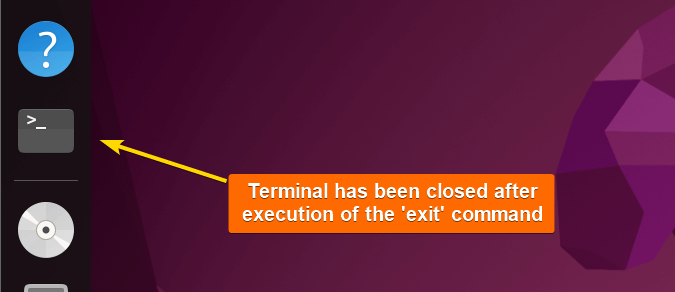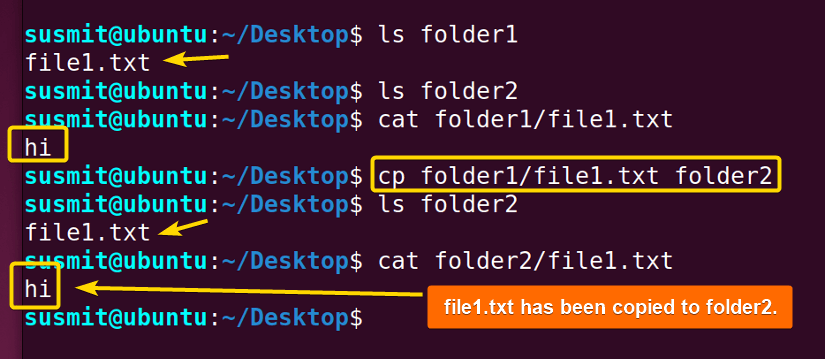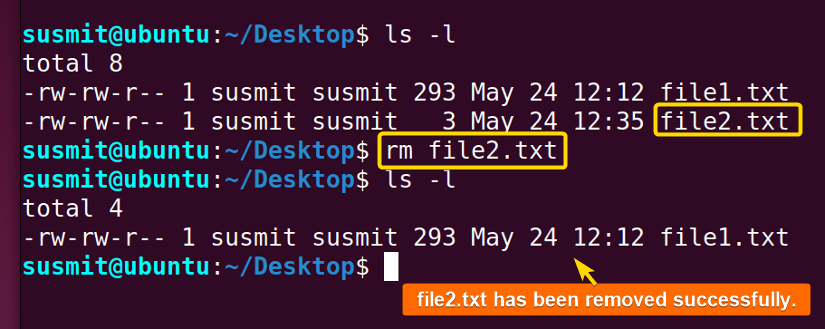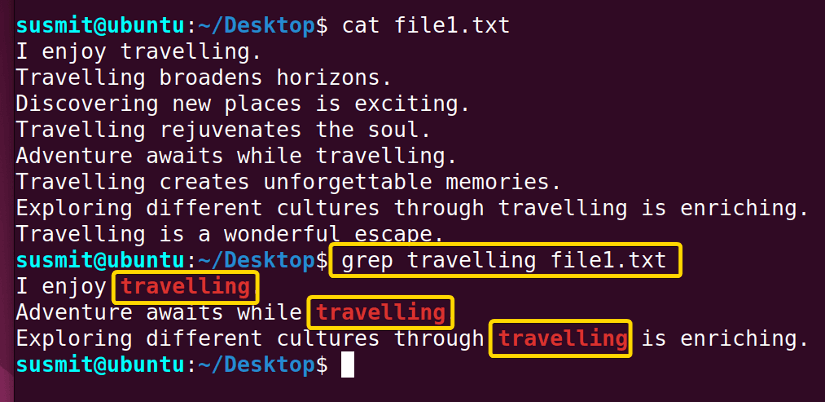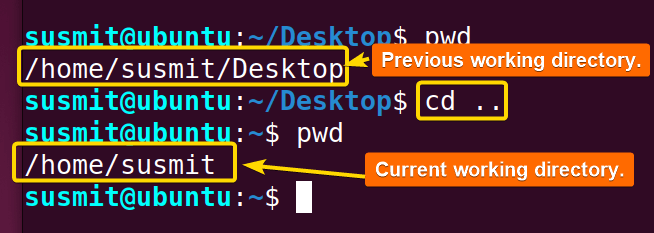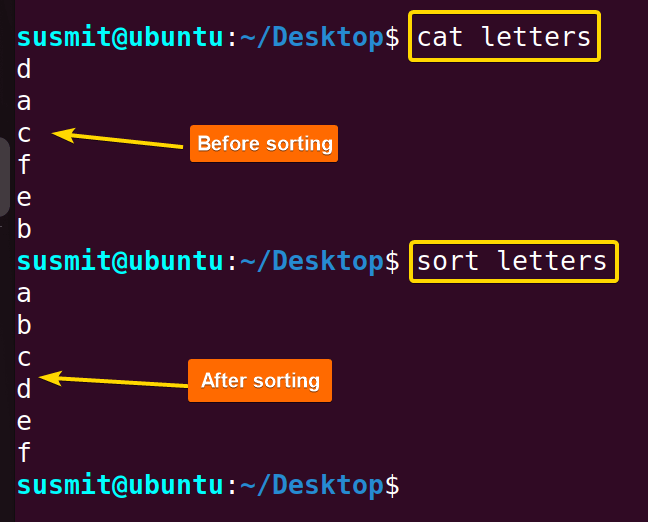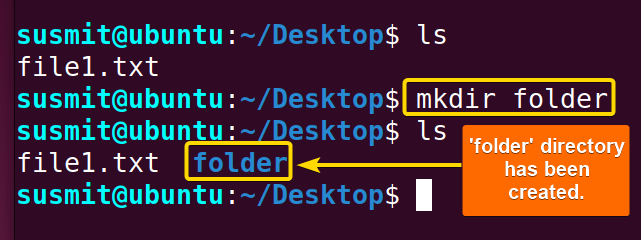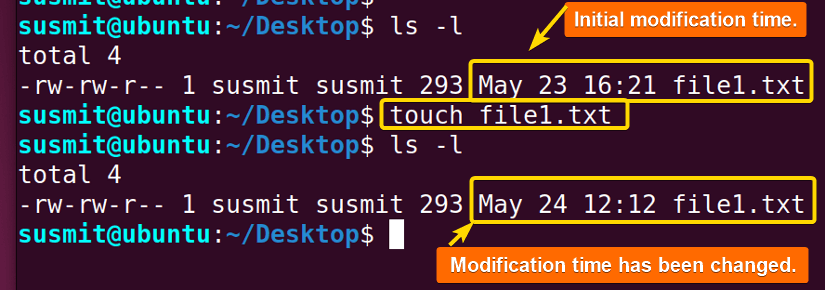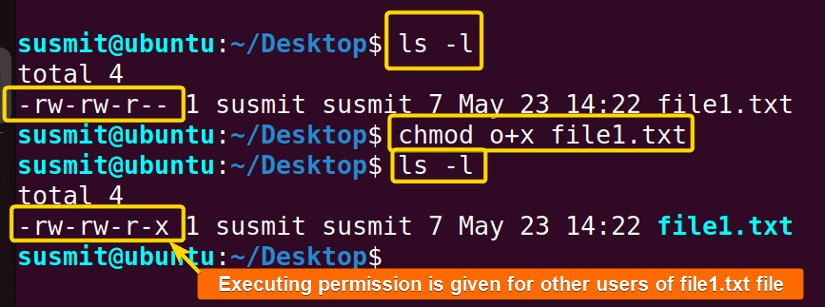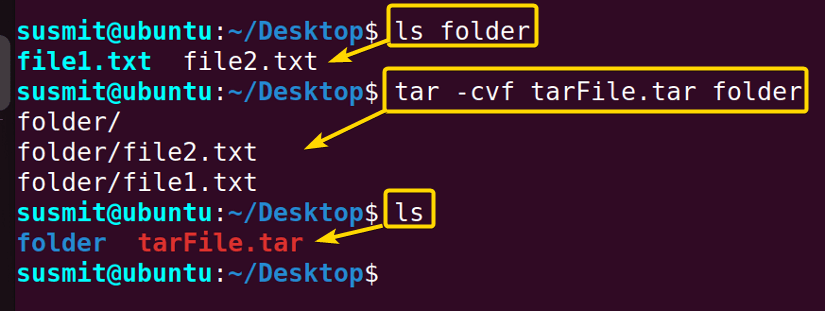FUNDAMENTALS A Complete Guide for Beginners

Linux is an Operating System that can do many things. You can use the command line to type commands and get the task done from Linux. Linux has many commands, but you don’t need to know them all. In this article, I will show you the top 20 Linux commands that are very useful. In simple words, these commands will help you to work with files, directories, user permissions, and installing packages.
Free Downloads
List of Top 20 Linux Commands
Here, I have selected the top 20 Linux commands based on working suitability with files, directories, user permissions, and installing packages.
1. “pwd” Command
The pwd command in Linux is a shell building that prints the current working directory path, starting from the root(/). It is one of the most basic and frequently used commands in Linux.
Syntax
pwd [OPTION]...Useful Options
- -L/ –logical: Uses PWD from the environment, even if it contains symlinks.
- -P/–physical: Avoids all symlinks.
Example
To print the current working directory, run “pwd” command in the terminal.
2. “echo” Command
The echo command in Linux is a built-in feature that prints out arguments as the standard output. This command is commonly used to display text strings or command results as messages.
Syntax
echo [SHORT-OPTION]... [STRING]...Useful Options
- -n: Does not output the trailing newline.
- -e: Enables interpretation of backslash escapes.
- -E: Disables the interpretation of backslash escapes (default).
Example
To echo a text from standard input, run echo ‘Hello World!’ in the command prompt. It will echo the ‘Hello World!’ text on the terminal.
3. “su” Command
The su command in Linux is used to switch to another user, by default the root user. It stands for switch user or substitute user. However, this command requires the password of the user to switch to unless it is run with sudo privileges.
Syntax
su [options] [-] [user [argument...]]Useful Options
- -c/–command=command: Passes the command to the shell with the -c option.
- -f/–fast: Passes -f to the shell, which may or may not be useful, depending on the shell.
- -g/–group=group: Specifies the primary group. This option is available to the root user only.
- –h/–help: Shows the help file for the su command.
- -/-l/–login: Starts as a login shell with an environment similar to a real login.
- –p/–preserve–environment: Preserves the shell environment.
- –s/–shell: Allows you to specify a different shell environment to run in.
Example
To switch the user from current user to other_user, run the ‘su other_user’ in the command prompt.
4. “sudo” Command
The sudo command in Linux allows you to run programs as another user, by default the root user. It stands for superuser do or substitutes user do. The sudo command is more secure than the su command because it does not require sharing the root password and it can grant limited administrative privileges to individual users.
Syntax
sudo [OPTION]… [COMMAND] [ARG]…Useful Options
- -D directory/–chdir=directory: Executes the command in the specific directory.
- -e: Edits one or multiple files instead of executing commands.
- -k/–reset-timestamp: Invalidates the user’s cached credentials.
- -l/–list: Lists the allowed (and forbidden) commands for the invoking user on the current host.
- -u user/–user=user: Executes the command as a user other than the specific default user.
- -v/–validate: Updates the user’s cached credentials, authenticating the user if necessary.
Example
To change permission settings availing sudo privilege execute the ‘sudo chmod 777 folder’ command into the terminal.
5. “clear” Command
The clear command in Linux is a standard Unix command that is used to clear the terminal screen. It looks for a terminal type in the environment and figures out how to clear the screen from the terminal database.
Syntax
clear [-Ttype] [-V] [-x]Useful Options
- -Ttype: Indicates the type of terminal. Normally this option is unnecessary because the default is taken from the environment variable TERM. If -T is specified, then the shell variables LINES and COLUMNS will also be ignored.
- -V: Reports the version of ncurses which was used in this program, and exits.
- -x: Does not attempt to clear the terminal’s scrollback buffer using the extended “E3” capability.
Example
To clear the previous command and its output from the terminal, run the ‘clear’ command into the terminal.
Before executing the clear command: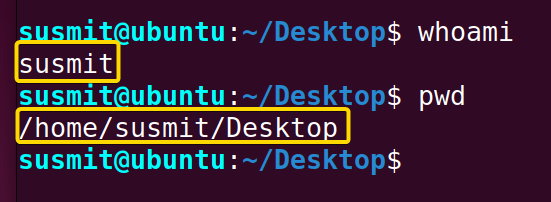
6. “exit” Command
The exit command in Linux is a built-in command that is used to exit the shell where it is currently running. It can take one optional parameter as [N] and exits the shell with a return status of N. If N is not provided, then it returns the status of the last command that was executed.
Syntax
exitExample
To close the current terminal, run the ‘exit’ command into the terminal. The following image shows that the terminal is open.The following image shows that terminal is closed after executing the exit command.
Before executing exit command: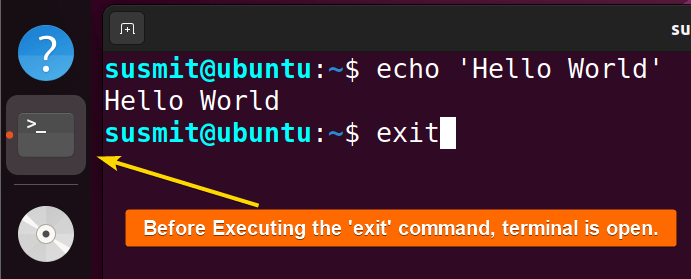
7. “cp” Command
The cp command in Linux is a command line utility for copying files and directories on Unix and Linux systems. The cp command can accept one or more source files or directories and a single destination file or directory as arguments.
Syntax
cp [OPTION]... SOURCE... DIRECTORYUseful Options
- -i/–interactive: Prompts for confirmation before overwriting an existing file.
- -l/– -link: Hard links files instead of copying.
- -L: Follows symbolic links in SOURCE.
- -n/–no-clobber: Does not overwrite an existing file.
- -p/–preserve: Preserves the specified attributes such as mode, ownership, timestamps, context, links, xattr, and all.
- -R/-r/– -recursive: Copies directory recursively.
- -s/– -symbolic: Create a symbolic link instead of copying.
- -t: Copies all source arguments into the directory.
- -T: No target directory. Treats DEST as a normal File.
- -u/– -update: Copies only when the SOURCE file is newer than the DEST file.
Example
To copy file1.txt from folder1 to folder2 execute the ‘cp folder1/file1.txt folder2’ command into the terminal.
8. “mv” Command
The mv command in Linux is a command line utility for moving and renaming files and directories on Unix and Linux systems. The mv command can accept one or more source files or directories and a single destination file or directory as arguments.
Syntax
mv [OPTION]... SOURCE... DIRECTORYUseful Options
- -f/–force: Overwrites an existing file without prompting.
- -i/–interactive: Prompts before overwriting.
- -n/–no-clobber: Does not overwrite an existing file.
- -u/–update: Moves only when the source file is newer than the destination file or when the destination file is missing.
- -v/–verbose: Explains what is being done.
Example
To move the file2.txt file from the current directory to the folder directory inside the current directory, execute the ‘mv file2.txt folder’ command into the terminal.
9. “rm” Command
The rm command in Linux is a command line utility for removing files and directories on Unix and Linux systems. The rm command can accept one or more files or directories as arguments.
Syntax
rm [OPTION]... [FILE]...Useful Options
- -d/–dir: Removes an empty directory.
- -f/–force: Ignores nonexistent files and arguments and never prompts the user.
- -i/–interactive: Prompts for confirmation before removing each file or directory.
- -r/-R/–recursive: Removes directories and their contents recursively.
- -I: Similar to the -i option but less prominent as only shows a prompt for every three files or recursive removal.
Example
To remove the file2.txt file run the ‘rm file2.txt’ command into the terminal.
10. “grep” Command
The grep command in Linux is a command line utility for searching files and directories for a string or a pattern of characters. The grep command can accept one or more files or directories as arguments or read from the standard input.
Syntax
grep [OPTION...] PATTERNS [FILE...]Useful Options
- -c/–count: Does not print any matches but rather the total occurring number.
- -i/–ignore-case: Ignores case distinctions in both the pattern and the input files.
- -r/–recursive: Reads all files under each directory, recursively.
- -v/–invert-match: Inverts the sense of matching, to select non-matching lines.
- -V/–version: Outputs the version number of grep and exit.
- -w/–word-regexp: Searches for a whole word.
Example
To print only ‘travelling’ containing sentences from the file1.txt run the ‘grep travelling file1.txt’ into the terminal.
11. “cat” Command
The cat command in Linux is a command line utility for concatenating and displaying files and standard input. The cat command can accept zero or more files or directories as arguments or read from the standard input.
Syntax
cat [OPTION]... [FILE]...Useful Options
- -E/–show-ends: Displays $ at the end of each line.
- -n/–number: Displays line numbers when utilized.
- -s/–squeeze-blank: Suppresses repeated empty output lines.
- -T/–show-tabs: Displays TAB characters as ^I.
Example
To print the contents of a file named file1.txt, run the ‘cat file1.txt’ command into the terminal.
12. “head” Command
The head command in Linux is used to print the first lines of one or more files or piped data to standard output in Linux and other Unix-like operating systems. It is the opposite of the tail command, which prints the last lines of a file or piped data. By default, the head command prints the first 10 lines of the specified files or data.
Syntax
head [OPTION]... [FILE]...Useful Options
- -c/–bytes=[-]NUM: Prints the first NUM bytes of each file; with the leading ‘-‘, print all but the last NUM bytes of each file.
- -n/–lines=[-]NUM: Prints the first NUM lines instead of the first 10; with the leading ‘-‘, print all but the last NUM lines of each file.
Example
To print only the first three characters of the file1.txt file, execute the ‘head -c 3 file1.txt’ command into the terminal.
13. “ls” Command
The ls command in Linux is a command line utility for listing files and directories on Unix and Linux systems. The ls command can accept zero or more files or directories as arguments or list the current working directory by default.
Syntax
ls [OPTION]... [FILE]...Useful Options
- -a: Lists all files and directories, including hidden ones that start with a dot (.).
- -d: Only lists the current directory, not its contents.
- -h: With option -l it shows file size in human-readable format(i.e. 1K, 100M, 10G).
- -l: Lists files and directories in a long listing format, showing file type, permissions, owner, group, size, date, and name.
- -n: Similar to option -l but it lists numerically.
- -R: Lists all subdirectories recursively.
- -S: Displays in a sorted manner by size(largest first).
- -t: Lists contents in a sorted manner by time(newest first).
Example
Type the ‘ls -l’ command into the terminal to print all the contents of the current directory.
14. “cd” Command
The cd command in Linux is used to change the current working directory in Linux and other Unix-like operating systems. It is one of the most basic and frequently used commands when working on the Linux terminal.
Syntax
cd [OPTIONS]Useful Options
- -L : Follows symbolic links. This is the default behavior of cd.
- -P : Don’t follow symbolic links. This means that if you try to navigate to a symlink that points to a directory, cd will change into the directory instead of the symlink.
Example
To go one directory backward, run the ‘cd ..’ command into the terminal.
15. “sort” Command
The sort command in Linux is used to sort the contents of a text file, line by line. It supports sorting alphabetically, in reverse order, by number, by month, and can also remove duplicates.
Syntax
sort [OPTION]... [FILE]...Useful Options
- -c/–check: Checks whether a file is sorted or not.
- -f/–ignore-case: Makes sort case insensitive.
- -k/–key: Sorts by key.
- -M/–month-sort: Sorts by month.
- -n: Sorts numerically, comparing according to string numerical value.
- -o: Writes the result to an output file instead of standard output.
- -R/–random-sort: Shuffles the contents of the file.
- -r: Reverses the result of comparisons, i.e., sort in descending order.
- -u/–unique: Removes duplicates.
Example
To sort the contents of the letters file, run the ‘sort letters’ command into the terminal.
16. “mkdir” Command
The mkdir command in Linux is used to create directories. This command can create multiple directories at once as well as set the permissions for the directories. It is important to note that the user executing this command must have enough permission to create a directory in the parent directory, or he/she may receive a ‘permission denied’ error.
Syntax
mkdir [OPTION]... DIRECTORY...Useful Options
- -m/–mode=MODE: Sets the file mode (permissions) for the created directories. The syntax of the mode is the same as the chmod command.
- -p/– parents: Creates parent directories as necessary. If the directories exist, no error is specified.
- -v/–verbose: Displays a message for every directory created.
Example
To create a directory named folder in the current directory, execute the ‘mkdir folder’ into the command line interface.
17. “touch” Command
The touch command in Linux is used to create, change and modify the timestamps of a file or a set of files. It can also be used to create an empty file without any content. The touch command can change the access time, and modification time, and change the time of files and folders.
Syntax
touch [OPTION]... FILE...Useful Options
- -a: Changes only the access time of the file or folder.
- -c/–no-create: Does not create any file if it does not exist. Avoid creating files.
- -d/–date=STRING: Changes both the access and modification times using a date string.
- -m: Changes only the modification time of the file or folder.
Example
To update the modification time of a file named file1.txt, run the ‘touch file1.txt’ command into the terminal.
18. “chmod” Command
The chmod command in Linux is used to change the access permissions and modes of files and directories. It can control who can read, write, and execute the file or directory. The chmod command can use either symbolic or octal notation to specify the permissions.
Syntax
chmod [OPTION]... MODE[,MODE]... FILE...Useful Options
- –c/–changes: Displays a message only if a change is made.
- -f/–silent/–quiet: Suppresses most error messages.
- -R/–recursive: Changes the permissions of the directory and its contents recursively.
- -v/–verbose: Outputs a Diagnostic when a file is processed.
Example
To give the execution permission of the file1.txt file to other users, run the ‘chmod o+x file1.txt’ command into the terminal.
19. “install” Command
The install command in Linux is used to copy files and set attributes in Linux and other Unix-like operating systems. It is similar to the cp command, but it can also create directories, change owner and group, and set permissions of the copied files. It is often used to install programs and scripts on the system.
Syntax
install [OPTION]... SOURCE... DIRECTORYUseful Options
- -C: Compares a pair of source and destination files.
- -d/–directory: Treats all arguments as directory names; creates all components of the specified directories.
- -D: Creates leading directories of the destination except for the target directory.
- -g: Sets group ownership.
- -m/–mode=MODE: Sets the file mode (permissions) of the copied files or directories. The syntax is the same as the chmod command.
- -o/–owner=OWNER: Sets the owner of the copied files or directories. This option requires superuser privileges.
- -t: Copies source files into a directory.
- -T: Treats destination as a file.
Example
To copy the file1.txt file which is existing in the current directory to the ~/Downloads directory, execute the ‘install file1.txt ~/Downloads’ command into the terminal.
20. “tar” Command
The tar command in Linux is used to create and extract compressed archive files in Linux and other Unix-like operating systems. It can also list, compare, update, and delete files from an archive. The tar command can use various compression methods, such as gzip, bzip2, and xz.
Syntax
tar {A|c|d|r|t|u|x}[GnSkUWOmpsMBiajJzZhPlRvwo] [ARG...]Useful Options
- -c/–create: Creates a new archive. Arguments supply the names of the files to be archived. Directories are archived recursively, unless the –no-recursion option is given.
- –delete: Deletes file/directory from the tar archive.
- -f: Sets the name of a tar archive.
- -j: Creates tar archive with bzip2.
- -r: Updates files/directories of the existing tar archive.
- -t: Displays the list of the tar archive.
- -v: Displays archived files of a tar archive.
- –wildcards: Specifies patterns of archived files of a tar archive.
- -x/–extract/–get: Extracts files from an archive. Arguments are optional. When given, they specify the names of the archive members to be extracted.
- -z: Creates tar archive with gzip.
Example
To make a tar folder named tarFile.tar including all of the files from the folder directory execute the ‘tar -cvf tarFile.tar folder’ in the terminal.
Conclusion
In conclusion, mastering the top 20 Linux commands is important for efficient system control. These commands empower users to manage files, troubleshoot networks, monitor processes, and automate tasks. Embrace the power of the command line to unlock the full potential of Linux.





